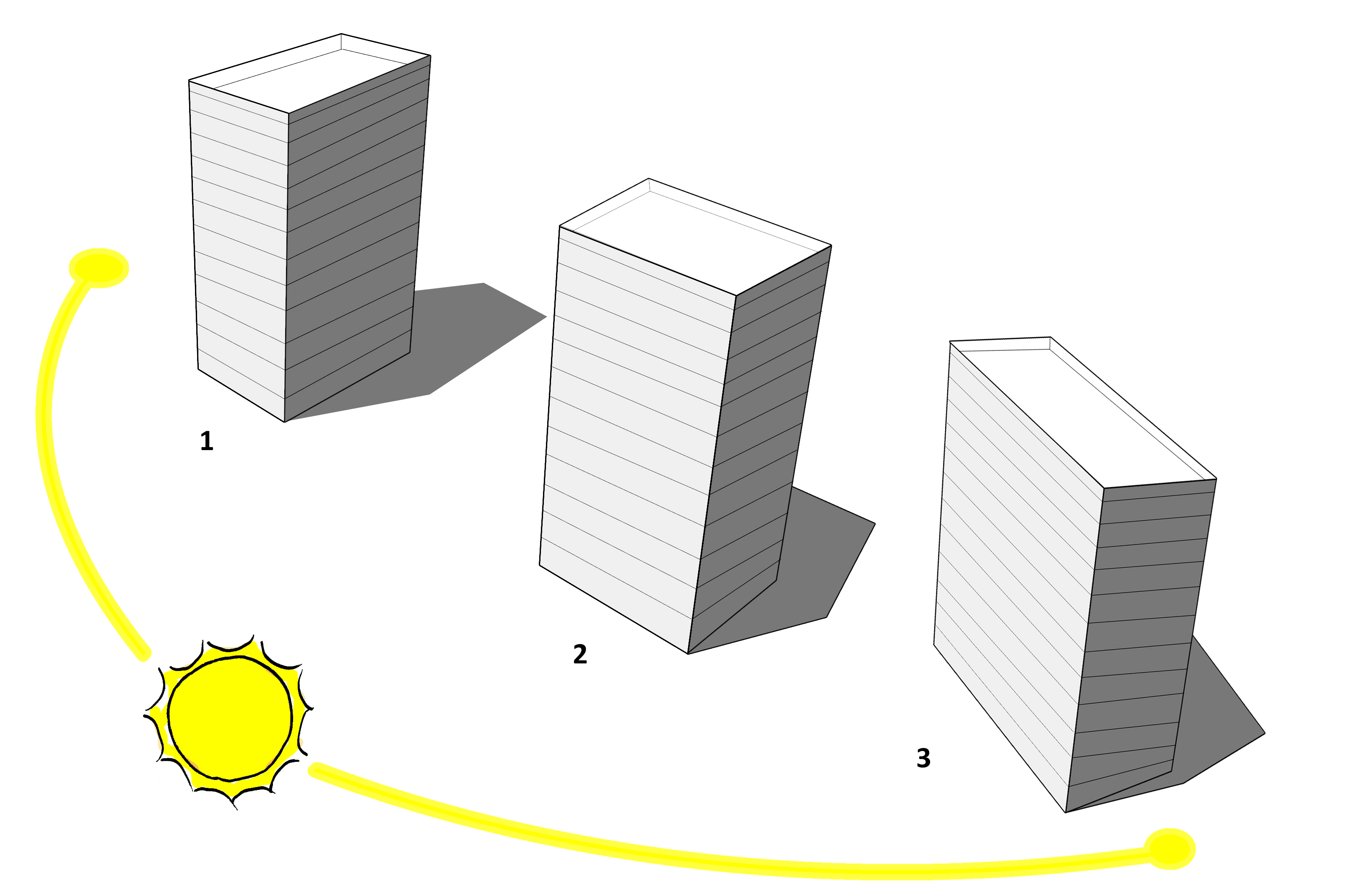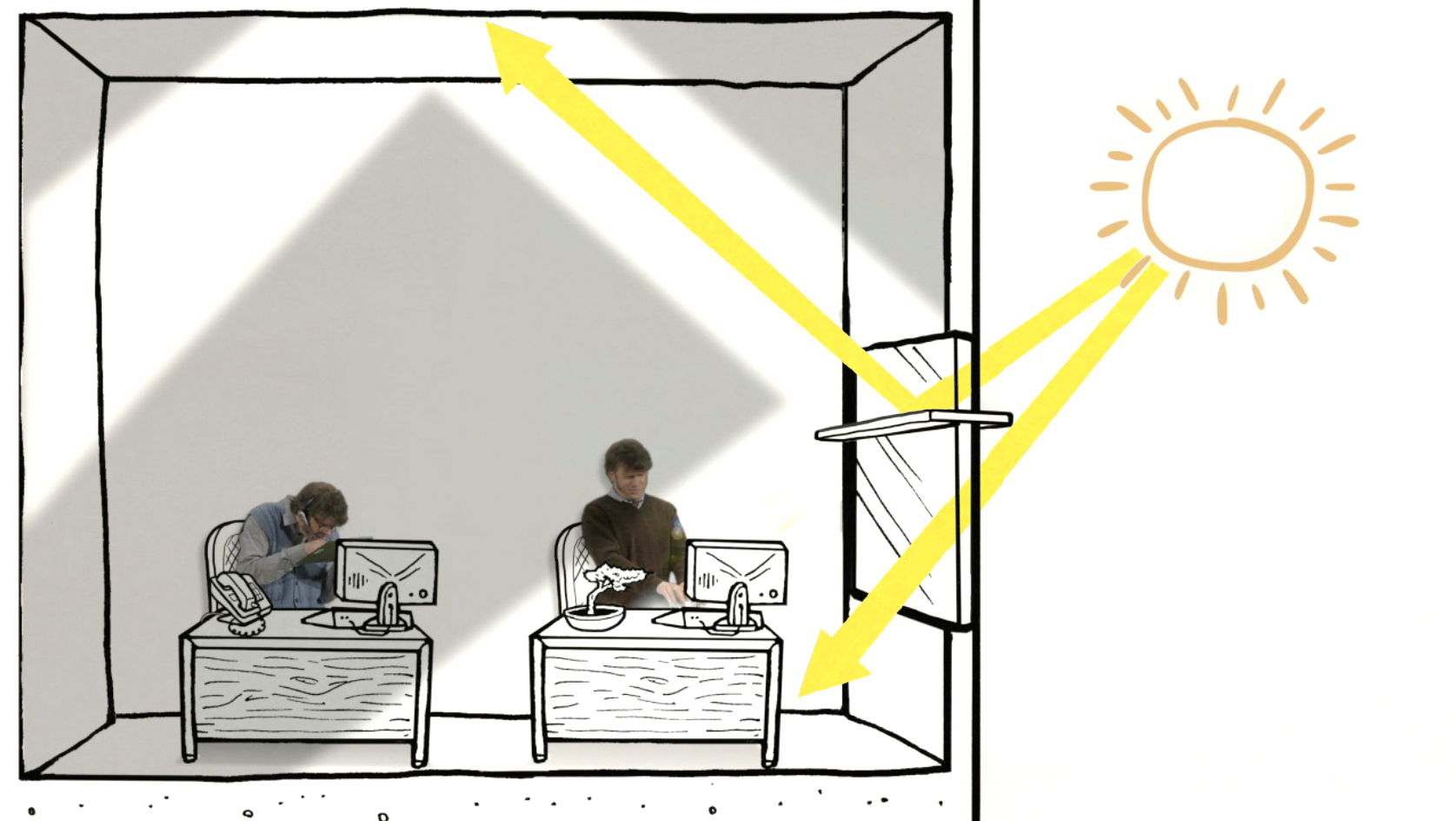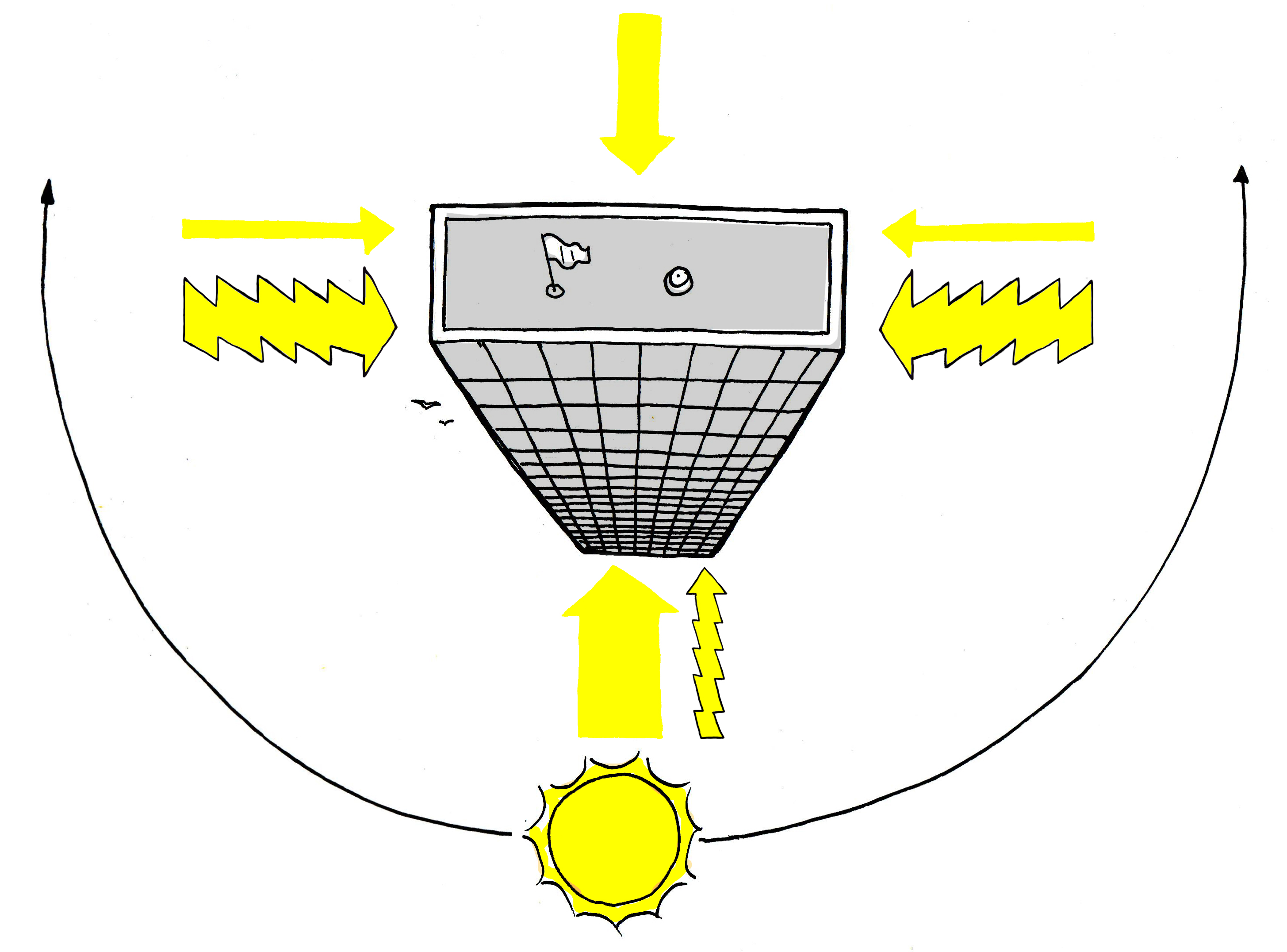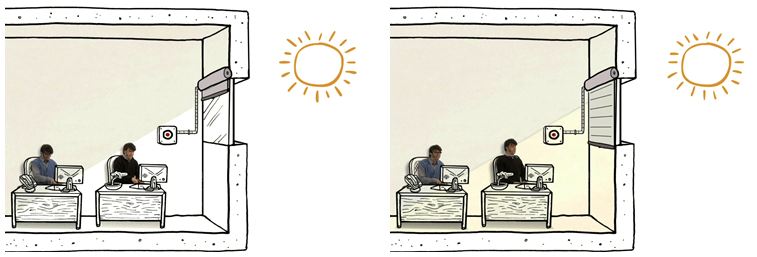visual comfort
Software
Massing and orientation are important design factors to consider for visual comfort, or daylighting. Many of the strategies are similar to those for passive heating, but also different factors, such as glare, to consider.
Redirecting light is the use of building elements to bounce sunlight into more desirable locations in the building. Light shelves and baffles are two strategies that can distribute light more evenly.
The locations and size of apertures matter a great deal if you want to utilize natural light in your building. Evenly-distributed light is critical to good daylighting, so apertures that are evenly distributed are useful.
Buildings are designed for people, and those people are trying to accomplish a task – whether it’s raising a family, running an office, or manufacturing a product. The building needs to keep people comfortable, efficient, healthy, and safe as they set about their task. Learn about acoustic, visual, and thermal comfort.
Shading is an important set of strategies for visual comfort and thermal comfort. As such, successful shading is measured by the overall success of visual and thermal comfort.
Pages




